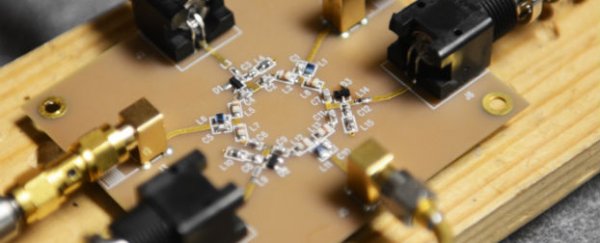An inexpensive new circuit has been developed by scientists in the US that can send and receive data simultaneously, and if built into smartphones, they say it could double the speed at which they wirelessly receive data.
Current circuits are restricted by having to send and receive data separately, because they're not equipped to quickly and easily distinguish between the two simultaneously. "As a smartphone accesses the Internet via a cell tower," says Tom Simonite at MIT's Technology Review, "its radio flips back and forth between sending and receiving, similar way to the way two people having a conversation take turns to speak and listen."
But now, scientists from the University of Texas have developed a more efficient type of circuit, called a circulator, that's capable of picking out and distinguishing between data that's coming in or going out on the same frequency band.
Circulators aren't new - since about 60 years ago, large, high-tech radar systems have been using them to distinguish between coming and going signals. But they're only able to do this with the help of enormous magnets made from expensive and - you guessed it - scarce rare earth minerals.
The real draw of this new type of circulator is that it does the same thing, except without magnets, by using devices called resonators that channel the wireless data signals in organised routes - a process known as 'full-duplex' functionality. Plus at just 2 centimetres wide, this new circulator is tiny, and the team is confident that it can be easily scaled down to mere microns.
"It's very cheap, compact, and light," metamaterials expert and lead researcher Andrea Alù told Simonite. "It's ideal for a cell phone."
Integrating the device into smartphones will be pretty simple, say the researchers - it doesn't require the entire phone to be redesigned and built, it just needs to be added onto existing wires.
The team has reported their research in the journal Nature Physics.
